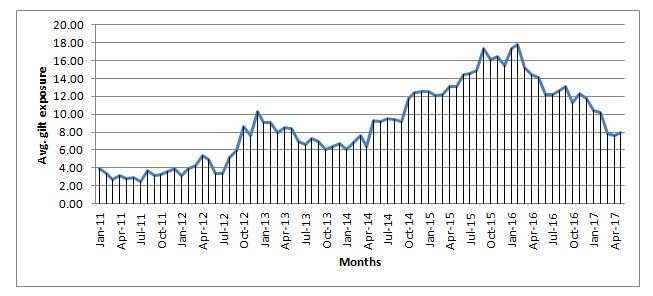Invest Balanced Funds Online
If you thought only dynamic bond funds adjusted their portfolios to rate cycles, a look at balanced fund portfolios may throw up a surprise. Traditionally, balanced funds do not juggle their debt components too much, preferring to simply hold top-rated corporate debt.
That changed after 2014, when several balanced funds began to take a call on interest rates to gain from bond price rallies. The most effective way to play duration and make money off falling rates is to invest in government securities. The average exposure to gilts for balanced funds began inching higher from 2013 onwards. As a result, balanced funds that took such duration calls gained on both equity and debt fronts.
In the rally that kicked off in 2014, the equity portion of the portfolio received a boost from price rallies on the debt portion of the portfolio as well.
Rising gilt exposure
In earlier rate cut cycles, such as that in 2012, balanced funds have not been aggressive in their debt portfolios. Average gilt exposure hovered between 5 per cent and 8 per cent for the most part. From mid-2014 onwards, however, when gilts first rallied, the average exposure began to rise quickly. In 2015, gilts accounted for more than half or more the debt portfolio, indicating that funds were getting increasingly aggressive on the debt front as well.

With the rate cut cycle now appearing to be drawing to a close, funds have brought down their gilt exposures. Even so, it remains much higher than previous years.
That means fund returns are subject not just to equity market volatility, but debt markets too. Earlier, the focus was on dynamically managing the equity side of the portfolio, with the debt simply there to provide stability.
If the trend of dynamically managing the debt side to boost returns continues, it could mean higher volatility for balanced funds albeit for potentially higher returns. Fund manager's ability to call rate cycles correctly would also come into play.
Invest Rs 1,50,000 and Save Tax up to Rs 46,350 under Section 80C. Get Great Returns by Investing in Best Performing ELSS Funds. Save Tax Get Rich
For further information contact SaveTaxGetRich on 94 8300 8300
OR
You can write to us at
Invest [at] SaveTaxGetRich [dot] Com
OR
Call us on 94 8300 8300